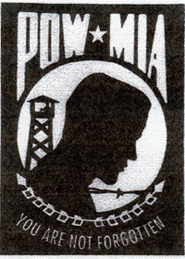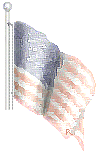The War Department also announced the names of 11 Iowa soldiers who are prisoners of war interned by Italy. They are:
Pvt. Melvin Brue, Lake Mills;
Corp. Merle Cripe, Rockwell City;
Pvt. Alvin C. Crouse, Storm Lake;
Staff Sergeant Charles R. Gillespie, Red Oak;
Pvt. Eldon D. Patterson, Rockwell City;
Pvt. (f.c.) Merlene H. Rold, Avoca;
Corp. Earl F. Schenck, Villisca;
Pvt. Michael M. Stern, Sioux City;
Sergt. John W. Wagner, Council Bluffs;
Staff Sergeant Sam L. Willoughby, Cumberland;
Pvt. (f.c.) Francis X. Zembsch, Cherokee.
Source: The Des Moines Register, Tuesday, July 20, 1943
![]()
Sioux City Commando Has Many Adventures; Escapes from Italy
Was with First Unit Ashore in North Africa Invasion
Two years of the hardest fighting with the British commandos in Algeria and Tunisia and a dramatic escape from an axis prison camp despite leg wounds, is the thrilling saga of Corporal Michael M. Stern, Sioux Cityan, as released by the infantry school at Fort Benning, Ga., where he was assigned after returning to the United States.
Son of Mr. and Mrs. Herman Stern, 711 13th Street, Corporal Stern went overseas with the famed 34th division, one of the first expeditionary forces to leave this country. He arrived in Northern Ireland, January 27, 1942.
With several hundred of his fellow soldiers he volunteered for duty with the British commandos. Living with them and wearing their uniform, he trained for three months in Scotland. Much of the instruction was designed to teach him to find his way alone in the strange country.
First Ashore
Corporal Stern’s commando unit was the first ashore as the akkied invasion of Africa got under way November 8, 1942. Their mission was to take a battery of big coastal guns, fiercely quarded by French Sengalese blazing away with machine guns and throwing hand grenades. Stern and his American British compatriots took the gun position after three days fighting.
What Corporal Stern related was the “biggest thrill of his combat career,” occurred when the commandos raided German held Bizerte. After an hour and 45 minutes of desperate street fighting the commando unit withdrew to the hill west of the city, split into pairs to avoid possible pursuers and Stern and his group returned to an American unit west of Bizerte 36 hours after the operation started.
Wounded by Shell
Transferred to the American 34th division’s mechanized reconnaissance troop, he got a taste of big scale fighting at Sheitla, which changed hands three times before our troops made good their grip on the town.
Wounded by a shell from a German 37, which demolished a jeep, killing the driver and gunner, Corporal Stern and a fellow sergeant were captured while trying to crawl back to their division, but not until the corporal was hit again in the same leg by a machine gun bullet.
He was marched to Bizerte and shipped to northern Italy. Treated and fed satisfactorily while confined to a German hospital, Corporal Stern did not fare so well when he was transferred to an Italian prison camp.
Escapes Italians
“Eyetie” food was poor, he asserted. Breakfast was a small cup of hickory-ersatz black coffee. The noon meal for the prisoners consisted of 500 grams of black bread and a thin slice of cheese. A bowl of watery soup, sometimes containing rice or macaroni, made up the evening meal.
Giving his Italian captors the slip Corporal Stern managed to reach a Canadian unit after tramping several hundred miles over the rough terrain. Still suffering from leg wounds he was returned to the United States last December. He joined the student training regiment at Fort Benning after a 21-day furlough at home.
Born in Sioux City, Corporal Stern attended Central High School where he played basketball and was active in track athletics. He was graduated in 1940 and three months later enlisted in the 34th division, a National Guard unit just called into federal service.
Source: The Sioux City Journal, April 17, 1944
![]()

